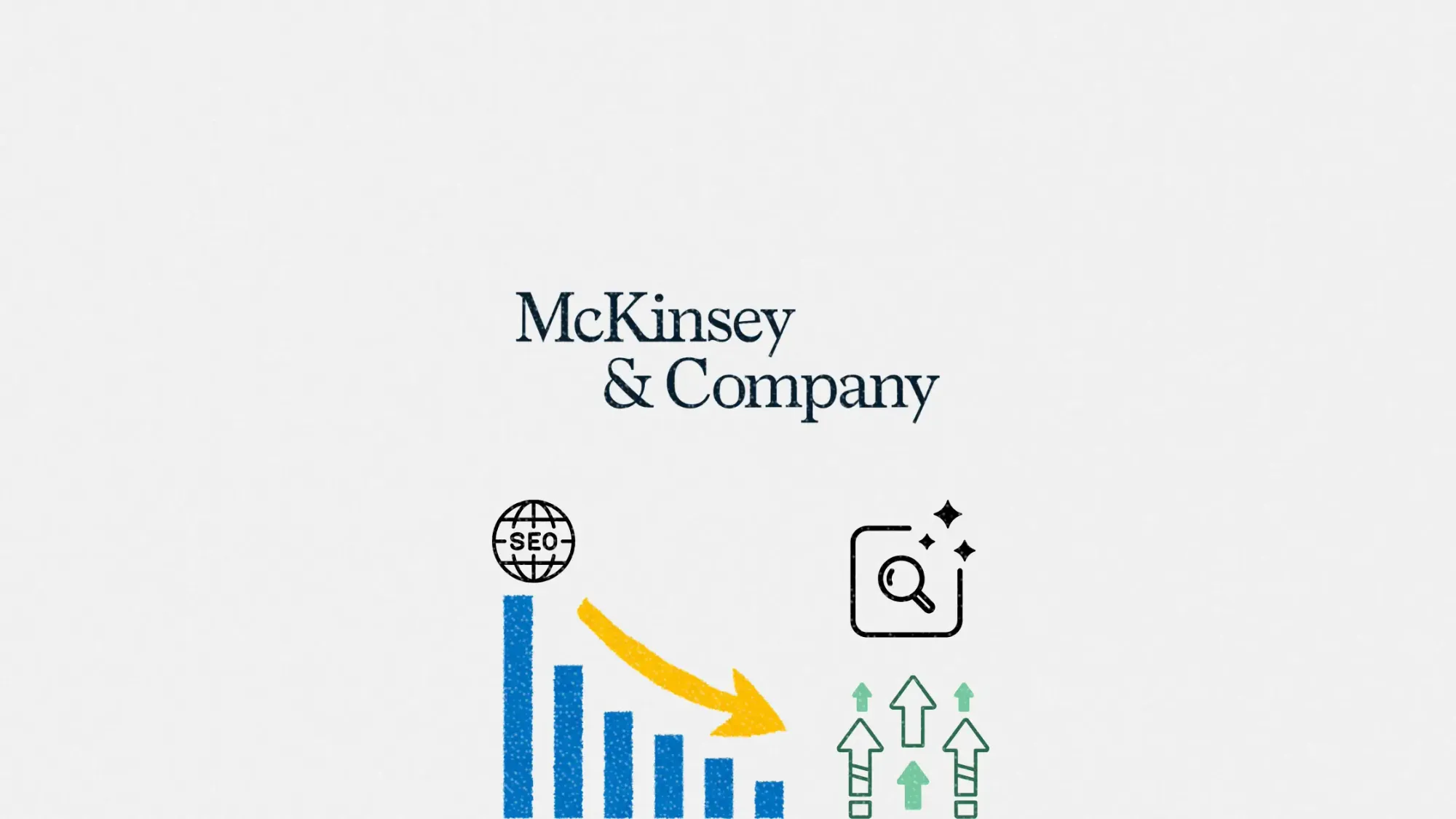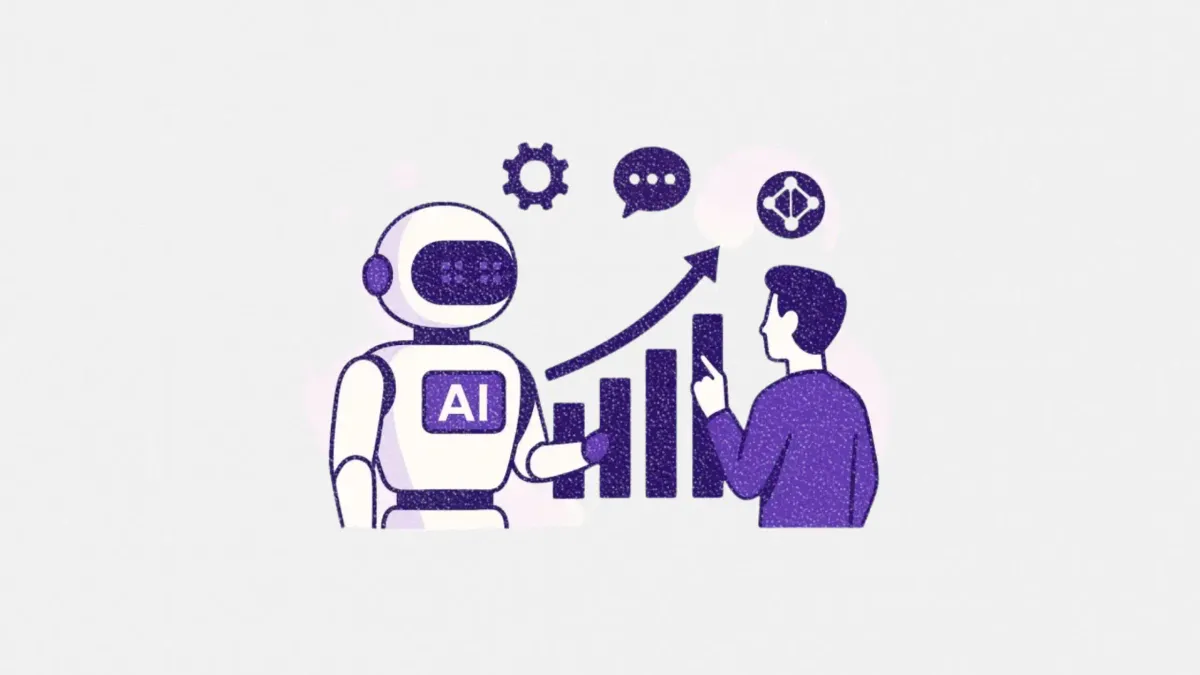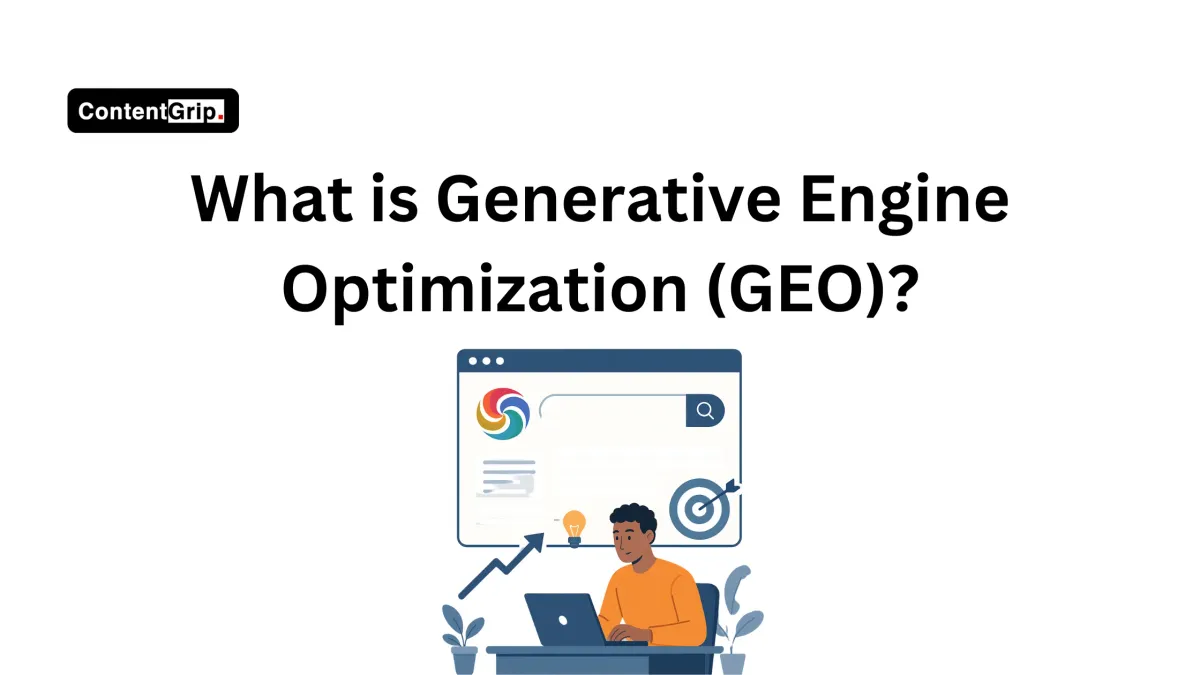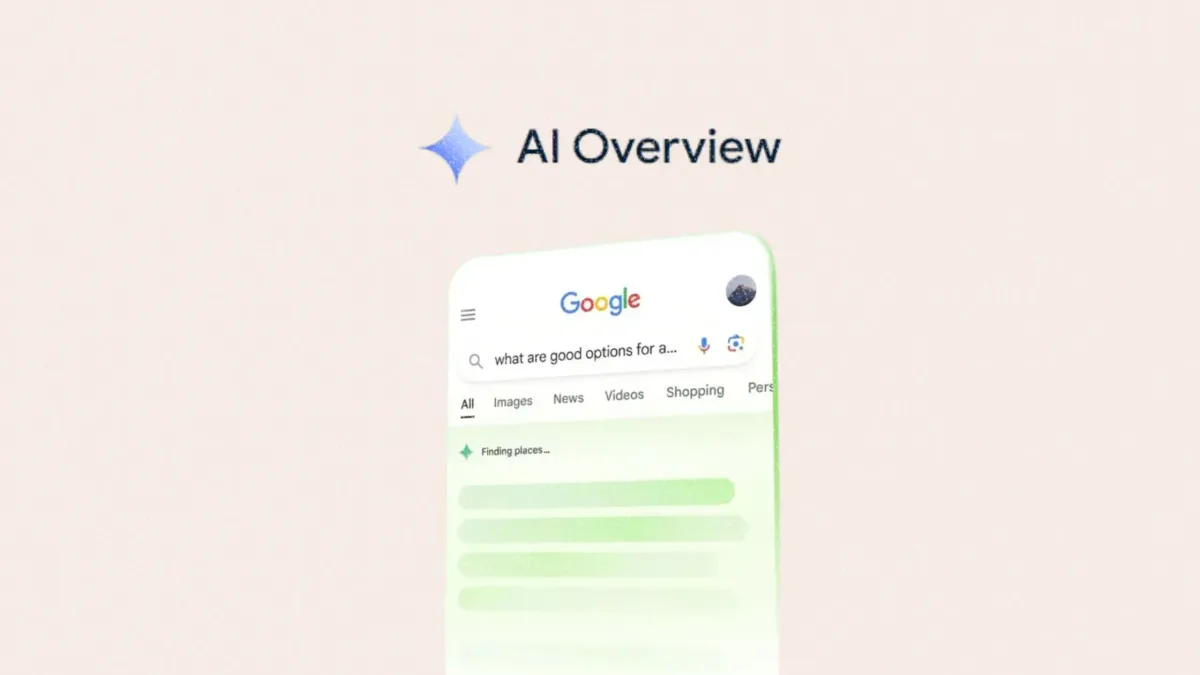AI is now the new front door to the internet according to McKinsey study
AI summaries now dominate Google results, threatening 50% of brand traffic. Here’s what to do next

That’s the central warning from McKinsey’s October 2025 report, which outlines how generative AI-powered search is quickly reshaping how people discover, research, and buy.
The report estimates that by 2028, AI-powered search will influence US$750 billion in consumer spending. Brands that fail to adapt could lose up to 50% of their traffic from traditional search platforms.
This article explores what’s changing, why it matters for marketers, and how to shift from SEO to GEO — generative engine optimization.
Short on time?
Here’s a table of contents for quick access:

What's happening with AI search
The AI search shift isn’t theoretical. It’s already happening. McKinsey’s latest consumer survey shows that half of US users now intentionally choose AI-powered search tools like ChatGPT, Perplexity, Google’s AI Overview, and Gemini to guide their buying decisions.
Some key numbers:
- About 50% of all Google searches now include AI summaries
- That’s expected to rise to over 75% by 2028
- Even baby boomers are actively using AI search for product discovery
AI search is now the default way people are researching, comparing, and narrowing down their choices. And they are doing it without ever clicking through to your website.

Why SEO is losing its power
Most brand websites only contribute about 5 to 10 percent of the sources that AI models use to generate answers. The majority of the data comes from third-party content — affiliate blogs, product reviews, retailer listings, forums, and community Q&A threads.
This means your organic search strategy might not even show up in the conversation anymore. McKinsey points out that in industries like apparel, credit cards, and electronics, some leading brands are completely absent from top AI summaries despite dominating in traditional search.
The result? A mismatch between brand strength and AI search visibility. In one retail category, McKinsey found brands with 60% lower share of voice in AI search compared to their actual market share.

What marketers should do now
McKinsey recommends four strategic moves to help brands win in the new AI-driven environment:
1. Start with a GEO diagnostic
Less than 20% of brands currently track how they appear in AI-generated summaries. Audit your performance across platforms like Google AI Overview, ChatGPT, and Perplexity. Measure visibility, sentiment, and which sources LLMs are pulling from.

2. Update your content investments
To show up in AI answers, your content needs to exist in the places that LLMs trust. That includes affiliate sites, online forums, publisher blogs, and reviews. For example, in financial services and CPG, over 65% of AI-cited sources come from publishers and UGC.

3. Optimize content for LLM readability
AI models prefer clear structure, fact-based language, and fresh insights. Strengthen your headings, provide updated data, and ensure content is topically relevant. Structure matters more than flair here.

4. Build GEO into your marketing stack
You’ll need a dedicated cross-functional team across marketing, SEO, and customer experience to manage GEO. Define new KPIs for AI visibility and update your tech stack to support continuous monitoring and optimization.
AI search is rewriting the rules of digital discovery. Visibility on Google is no longer a guarantee that your brand will show up when it matters. If you're not part of the AI-generated answer, you may not be part of the decision journey at all.
This isn’t about abandoning SEO, but evolving beyond it. Brands that invest in GEO now will gain a competitive edge while others lose ground without even realizing it.







